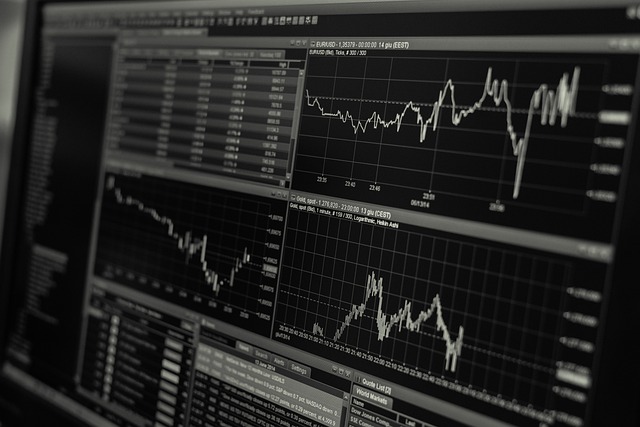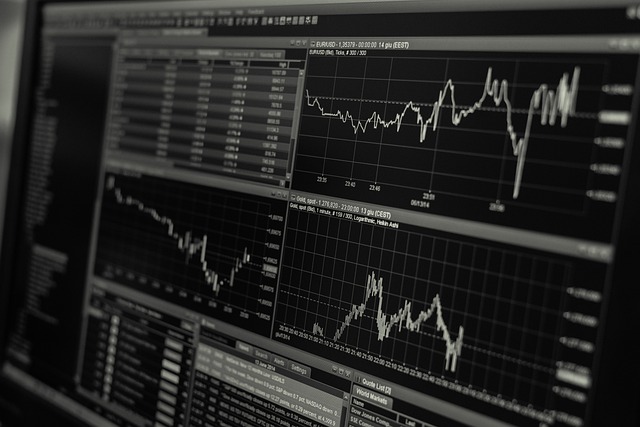Ninjatrader Exchange Fees Explained
Author: Jameson Richman Expert
Published On: 2025-08-04
Prepared by Jameson Richman and our team of experts with over a decade of experience in cryptocurrency and digital asset analysis. Learn more about us.
Understanding Ninjatrader exchange fees is a fundamental component for traders aiming to optimize their trading strategies, reduce costs, and maximize profitability. Ninjatrader is renowned for its sophisticated charting tools, customizable trading interfaces, and extensive market access, making it a preferred platform for active traders across various asset classes. However, while Ninjatrader provides a powerful trading environment, it does not directly impose trading fees; instead, it acts as a gateway to numerous brokerage services, each with distinct fee structures. Therefore, a comprehensive understanding of how these fees work, the factors influencing them, and strategies for minimizing costs is essential for effective trading.

What Are Ninjatrader Exchange Fees?
Ninjatrader exchange fees encompass all the costs associated with executing trades through the platform, but it’s important to clarify that Ninjatrader itself does not charge a trading fee. Instead, it provides connectivity to various brokers and data providers, each with their own fee schedules. These fees include:
- Broker commissions: Fees charged per trade, which can be based on fixed amounts, per contract, or per share. These vary widely depending on the broker and asset class; for instance, futures brokers often charge per contract, while stock brokers may offer commission-free trading but compensate with wider spreads or data fees.
- Bid-ask spreads: The difference between the highest bid and lowest ask prices, representing a hidden cost that impacts trade entry and exit, especially in less liquid markets such as forex, CFDs, and cryptocurrencies. Narrower spreads typically indicate more efficient and cost-effective trading environments.
- Overnight financing or swap rates: Costs or credits for holding positions overnight, especially relevant in forex, futures, and CFD markets. These rates are influenced by interest rate differentials between traded assets and can fluctuate daily based on market conditions.
- Market data fees: Charges for real-time data subscriptions necessary for timely trading decisions. These fees depend on the asset class, data provider, and the level of detail (e.g., Level II quotes, historical data, futures feeds). Some brokers include basic data in their packages, while advanced feeds attract additional costs.
- Platform and data feed fees: Additional charges for premium features such as advanced charting, API access, or higher-tier data streams. Some brokers bundle these fees, while others charge separately, especially for professional or institutional accounts.
Recognizing that Ninjatrader functions as an intermediary connecting traders to brokers and data providers is crucial. Your total trading costs are therefore heavily dependent on your selected broker’s fee structure, the asset classes traded, and your trading volume and frequency.
Types of Fees Associated with Ninjatrader
Deep knowledge of the specific fee types allows traders to develop cost-effective strategies. Here are the primary fee categories:
Commission Fees
Commission fees are charges applied per trade, with variations based on asset class and broker policies. Examples include:
- Futures trading: Usually involves a fixed fee per contract, such as $1.50 to $5.00, with tiered discounts for high-volume traders. Some brokers also offer rebate programs that reward high-frequency traders, effectively reducing net costs.
- Stock trading: Many brokers now offer zero-commission trades; however, they may offset this by wider spreads, data fees, or account maintenance charges. Certain premium accounts or professional trading tiers may have platform or commission fees.
- Forex and CFD trading: Often involve spreads as the primary cost, but some brokers charge a small commission per lot or per trade, which is added to the spread. The choice depends on trading style and the need for transparency in costs.
Understanding these nuances helps traders select the most cost-efficient broker aligned with their trading volume, frequency, and strategy.
Spreads
The spread—the difference between bid and ask prices—is a fundamental cost component especially in forex, CFDs, and cryptocurrencies. Brokers offer:
- Fixed spreads: Remain constant regardless of market volatility, providing predictability but often at a slightly higher average spread.
- Variable spreads: Fluctuate with market conditions, narrowing during low volatility periods and widening during high-impact news releases or turbulence.
Lower spreads reduce entry and exit costs, which is especially critical for scalping, day trading, and high-frequency strategies where small costs compound rapidly. Traders should monitor typical spread ranges for their preferred instruments and account types to assess overall cost efficiency.
Overnight Financing or Swap Fees
Positions held overnight incur rollover or swap rates, reflecting the interest rate differential between the traded currencies or assets. For example:
- Forex: Swap rates depend on the interest rate differential; traders may earn or pay depending on their position and currency pair. These rates can be positive or negative and fluctuate daily based on market interest rates.
- Futures and CFDs: May include overnight financing charges calculated daily, influenced by the underlying asset’s interest rates and broker policies. Some brokers offer swap rate calculators for precise cost estimation.
Effective management of overnight positions and understanding swap rates can significantly influence overall profitability, especially for swing traders and long-term investors.
Market Data Fees
Access to real-time market data is vital for precise trading. Data fees vary by asset class, data provider, and subscription level. Basic packages often include limited data, while premium feeds—such as Level II quotes, futures market data, or institutional-grade feeds—incur additional charges. Traders should evaluate their actual data needs carefully, balancing cost against the necessity for timely and detailed information.
Platform and Software Fees
Although Ninjatrader offers a free version with core features, advanced functionalities—such as multi-asset trading, automated strategies, and enhanced analytics—may require subscriptions or one-time payments. Additional platform fees may apply, especially for professional or institutional accounts, including:
- Advanced charting and analysis tools
- API access for algorithmic trading
- Dedicated account management and premium support services
Reviewing these costs regularly ensures traders do not pay for unused features and can optimize their trading setup accordingly.
Factors Affecting Ninjatrader Exchange Fees
Multiple variables influence the overall trading costs when using Ninjatrader, including:
- Asset Class Traded: Different markets—forex, stocks, futures, cryptocurrencies, options—have unique fee structures, liquidity profiles, and operational costs. For example, cryptocurrency trading often involves variable spreads and blockchain network transaction fees, while futures involve fixed exchange and clearing fees per contract.
- Broker Selection: The choice of broker significantly impacts fees. Some brokers offer low commissions but wider spreads or higher data fees; others provide rebates, tiered pricing, or integrated data packages suited for high-volume trading.
- Trading Volume: Higher trading volumes can unlock tiered pricing, rebates, or tighter spreads, lowering the average cost per trade over time.
- Account Type and Tier: Professional, premium, or institutional accounts typically benefit from reduced fees, priority support, and access to advanced features, making them advantageous for active or professional traders.
- Market Conditions and Volatility: During periods of heightened volatility, spreads tend to widen, and slippage may increase, raising trading costs unexpectedly. Timing trades during calmer periods can mitigate these expenses and improve overall cost efficiency.

How to Minimize Trading Fees on Ninjatrader
Proactively managing and reducing trading costs can significantly boost profitability. Consider these strategies:
- Compare Broker Fee Structures: Conduct thorough research to select brokers offering the most favorable fee arrangements—consider commissions, spreads, data fees, and platform costs. Examples include NinjaTrader Brokerage, Interactive Brokers, and TD Ameritrade.
- Leverage High Trading Volumes: Many brokers provide rebates, tiered commissions, or tighter spreads for high-volume traders, leading to lower per-trade costs.
- Use Limit and Stop Orders: These order types can help avoid market spreads and slippage, leading to more predictable execution costs.
- Trade During Optimal Market Conditions: Avoid trading during high-volatility periods such as major economic news releases to prevent spread widening and increased slippage.
- Optimize Data Subscriptions: Subscribe only to essential real-time data feeds needed for your strategies, avoiding costly unnecessary packages.
- Regularly Review Fee Structures: Market conditions and broker policies evolve; staying informed helps adapt strategies to minimize costs over time.
Comparing Fees Across Different Trading Platforms
For traders exploring cryptocurrency markets, platforms like Binance, MEXC, Bitget, and Bybit offer competitive fee structures and features. For example:
- Binance: Known for some of the lowest trading fees, with discounts for high-volume traders and BNB token holders, often as low as 0.02% per trade.
- MEXC, Bitget, and Bybit: Offer tiered fee models incentivizing high-volume trading, plus referral programs that can further reduce costs or provide additional perks.
Utilizing referral programs—such as this XRP analysis or Bitget referral—can help traders reduce trading expenses and earn additional benefits.
Final Thoughts
A comprehensive understanding of Ninjatrader exchange fees and their influencing factors is essential for developing a sustainable, profitable trading strategy. While Ninjatrader offers an advanced trading environment, the actual cost landscape is shaped by the choice of broker, asset classes traded, and current market conditions. By carefully analyzing the different fee components—such as commissions, spreads, overnight rates, and data fees—traders can implement effective strategies to minimize costs. Staying informed through reputable resources, conducting regular fee structure reviews, and adapting trading practices in response to market dynamics will empower traders to manage costs proactively. For further insights into long-term trading prospects and future projections, explore this detailed analysis. To examine the legal and ethical considerations of future trading, see this article. Equip yourself with knowledge, actively manage costs, and trade confidently for sustained success!